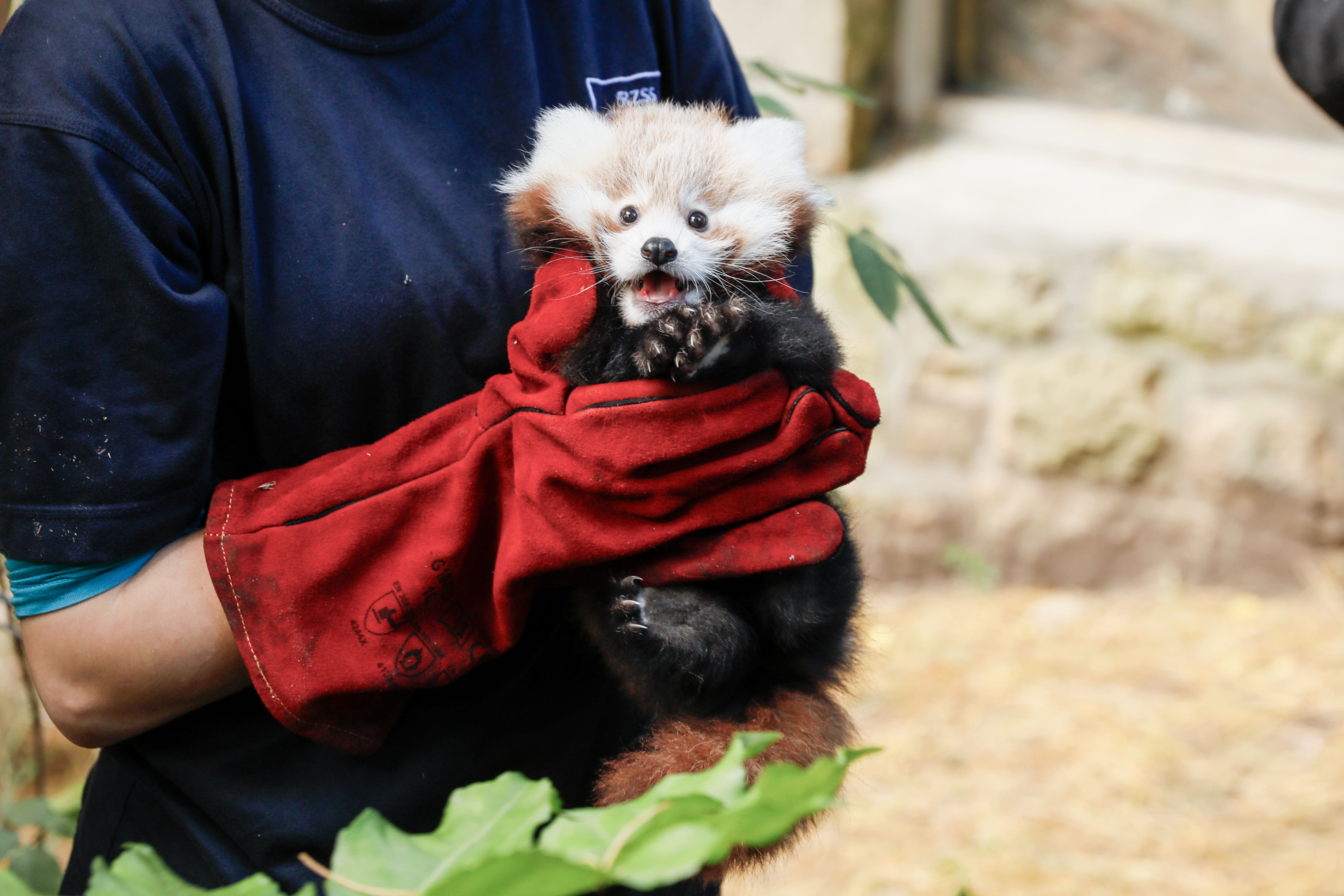Red panda born at Scottish zoo healthy and doing well, say keepers
The female kit was born at Edinburgh Zoo in July.

A female red panda born at a Scottish zoo is healthy and doing well, according to her keepers.
The kit, who has yet to be named, was born at the Royal Zoological Society of Scotland’s (RZSS) Edinburgh Zoo on July 17.
The RZSS veterinary team have now conducted her first health check and said she is doing well.
The youngster, who zoo staff say will be named shortly, lives with her mother Ginger and her father Bruce.
Donald Gow, living collections operations manager at Edinburgh Zoo, said: “We are very pleased to see Ginger and Bruce’s new kit is doing well and has had her first successful health check-up with the vets.
“She looks very cute but they also have a feisty side, so we are currently trying to think of a name that will suit her personality.”
Red pandas, which are more genetically similar to racoons than to giant black-and-white pandas, are classed as endangered by wildlife experts, with an estimated 10,000 or less left in the wild.
They are threatened by poachers and the destruction of their habitat due to deforestation.
They are native to the Eastern Himalayas and south-western China.
Currently, there are five red pandas living at the zoo.
Bookmark popover
Removed from bookmarks